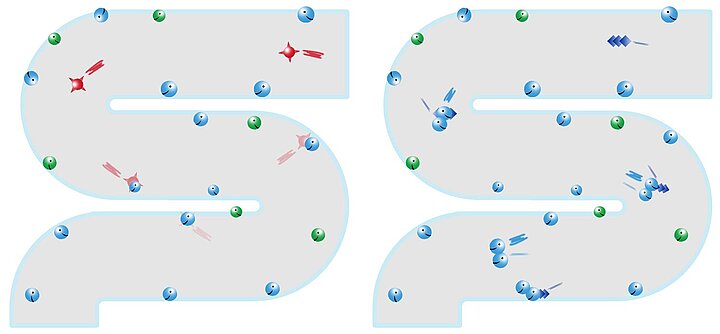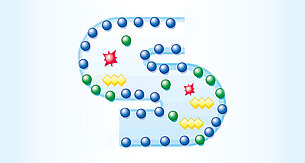How breast milk works in the intestine
The lactic acid cultures contained in breast milk build a protective shield on the intestinal wall and protect the child from possible pathogens. Because of breast milk’s dietary fibres (oligosaccharides), lactic acid cultures can multiply even better.


Natural lactic acid cultures:
Breast milk contains helpful lactic acid cultures which settle in the intestine and ward off harmful germs.
A healthy intestinal flora mostly comprises positive bifidus cultures and lactobacilli.
These lactic acid cultures from breast milk settle on the intestinal wall as a protective shield and protect the child.

Pathogens:
Possible pathogens are fought against and effectively prevented from settling in the intestine.

Breast milk dietary fibres:
serve as ‘food’ and enable lactic acid cultures to better multiply.
Furthermore, breast milk also contains dietary fibres (oligosaccharides) which serve as food for the protective lactic acid cultures and cause these to multiply.




